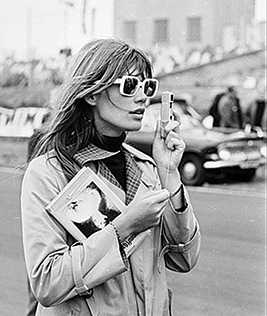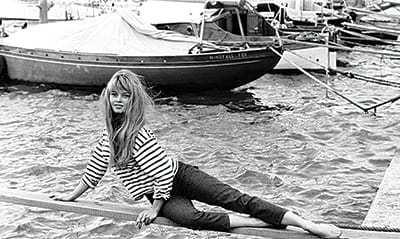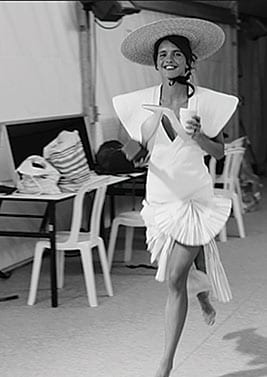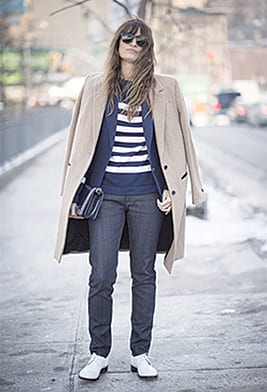If we’re going to start anywhere with French fashion, we should begin chronologically with the 17th Century and the lavish style of Louis XIV, the Sun King. Apart from gaining repute for building the opulent Palace of Versailles, he also became well known for his exquisite attire and introduction of the textile trade to France. He ensured that France was to be an authority and destination for the highest quality materials
Marie Antoinette gave so much importance to fashion that she had her own dressmaker, Rose Bertin. Her large, ostentatious gowns ensured that their wearer occupied at least three times as much space as her male counterparts, thus making the woman a more imposing presence.

Her creations also established France as the centre of the fashion industry, and from then on dresses made in Paris were sent to London, Venice, Vienna, Saint Petersburg and Constantinople. It was this inimitable Parisian elegance that established the global reputation of French couture.
Josephine Bonaparte also played a key role in the innovation of traditional court attire.
Josephine was among the first to adopt the daring neo- Greek dress style, setting trends during a period that is regarded by costume and fashion historians as one of the most creative periods in the history of ladies-wear.

Corsets and highly structured Panier ( basket) gowns were replaced by lighter materials, even with some occasional textile transparency.
The 19th Century saw the emergence of Couture Houses in Paris, most notably Worth Couture, which was founded by an Englishman and Madelaine Vionnet, who was famous for her bias cut and sensual dresses.
The most famous and iconic French fashion house established in the early 20th century was of course Chanel. The innovation that Coco Chanel brought to fashion following the rigidly structured period of the 19th century was remarkable. She wanted to free women. She shunned uncomfortable garments like the corset, which forced the female upper body into a certain shape, and insisted on free-flowing designs that became very popular during the 1920s.
YSL and his muses – Betty Cathroux, Lou Lou de la Falaise and Catherine Deneuve – embodied that which YSL wanted to give to women: POWER
Christian Dior became popular after World War II when he revolutionised fashion with a new look.

Characterised by a narrowed waistline and A-line skirt that reached mid-calf, Dior’s pioneering style transformed the female silhouette, though it initially drew a lot of criticism due to the amount of fabric needed to produce his garments. Feminists like Chanel were outraged, arguing that his restrictive and regressive designs took away women’s independence.
And then came the brief period of London’s dominance in the swinging ‘60s, when the UK took the spotlight away from France. It was then that Paco Rabanne worked in France to dress iconic singer Françoise Hardy and also to create the iconic metallic dress that Jane Fonda would wear in the cult science fiction film Barbarella, directed by Roger Vadim.
The inimitable Yves Saint Laurent arrived in the mid-60s and had become highly popular by the 1970s. YSL introduced a number of men’s jackets to the female wardrobe – namely ‘Le smoking’ – and was the first couturier to produce a ready-to-wear collection. Saint Laurent and his muses – Betty Cathroux, Lou Lou de la Falaise and Catherine Deneuve – embodied that which YSL wanted to give to women: POWER.

Extravagance is the power of Haute Couture houses like the surrealist Schiaparelli, founded in the 1920s, and the enfant terrible of the 1980s, Jean-Paul Gaultier. Their Haute Couture shows are always fun to watch, with the imagination really placed in the service of dreams and the impossible.
The essence of French fashion chic today is probably in line with its historically constant need for freedom and no restrictions. Total head-to-toe designer looks are ridiculed and nothing too girlie is favoured. Not thinking too much about fashion – just putting things together and seeing what emerges – is the motto. Effortlessly cool is the slogan of French women. A girl in Paris today needs a tuxedo jacket, a pair of jeans and a white t-shirt as her fashion essentials.
Extravagance is the power of Haute Couture houses such as the surrealist Schiaparelli, founded in the 1920s, and Jean Paul Gaultier, the enfant terrible of the 1980s
If we look back at some of the French fashion muses of the past, such as Deneuve, Brigitte Bardot, Jane Birkin and Françoise Hardy, it was always much more about character than showing off one’s personal style and just having that je ne sais quoi… Think of Bardot, with her pouting lips, flat shoes and simple, well-fitting clothes. There was nothing screaming for attention, yet we just couldn’t stop looking.

In recent fashion times, we can’t overlook Isabel Marant, a Parisian brand founded in the ‘90s that defines fashion’s gold standard of cool-girl Parisienne chic.
The style is again effortless, which is the quintessential characteristic of the French girl’s uniform. Jacquemus would be the hottest new thing to come out of France in terms of the latest designers, and he has quickly amassed a cult following. His clothes would be perfect for the French film La Piscine, with Alain Delon, Romy Schneider and Jane Birkin – sensuality, French sassiness and sunshine happiness.
Another contemporary success is represented by the creations of Roger Vivier. His shoes are the quintessential Parisienne’s signature and can be seen regularly on their ambassador, Ines de la Fressange, who epitomises Gallic elegance.

ROUJE by Jeanne Damas, with just the right amount of sex appeal. Rouje perfectly embodies the effortless, je ne sais quoi Parisian attitude we’re all trying to master. Wear Rouje and you immediately feel like a French girl.
I love this season’s updated colour palette of creams, lilacs, greens and peach. Moreover, designer Damas creates highly wearable, everyday pieces that look great on everyone.
According to the current fashion pack’s muse, Caroline de Maigret: “The Parisienne never gives too much away. When it comes to revealing herself, she follows one golden rule: Less is definitely more. It’s all about character.” The show must go on … vive la Liberté, égalité, sensualité!